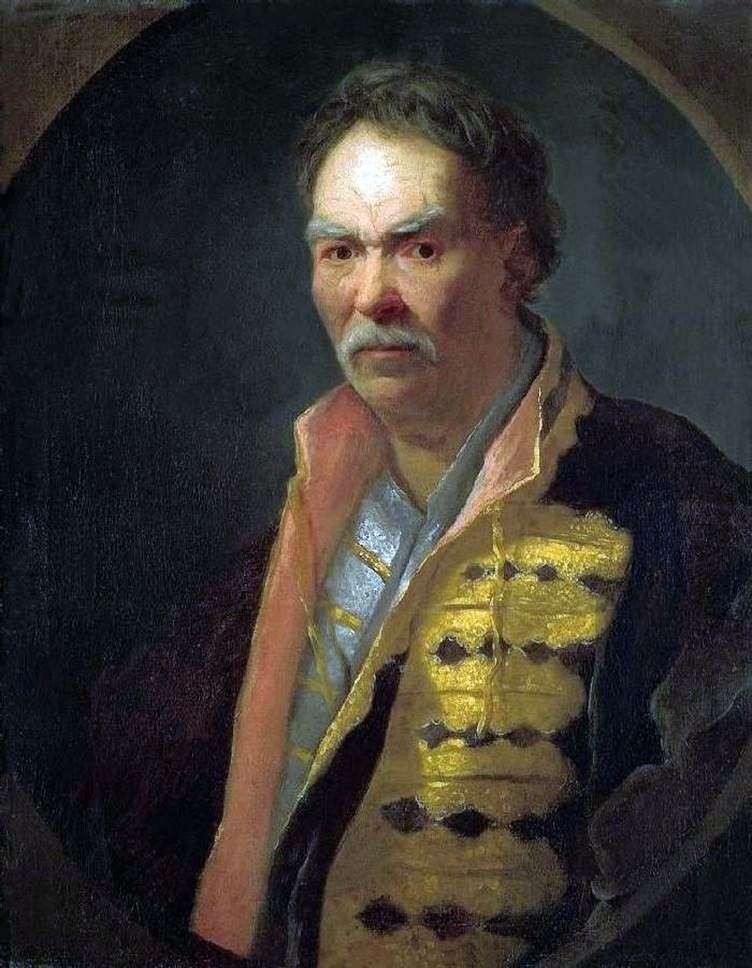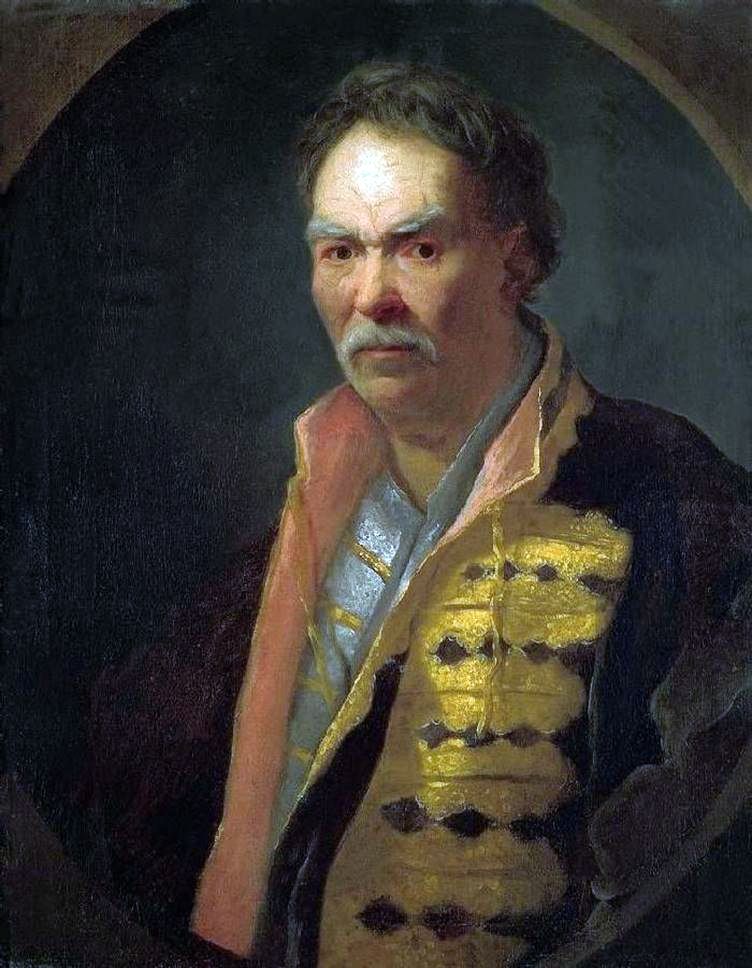
Guess about the face depicted in this portrait was made in the 19th century, when it was called Mazepa, Skoropadsky, or the names of other Ukrainian generals. Recently, it has been suggested that this is the Lithuanian hetman Count Casimir Jan Sapega. Anyway, in the work of Nikitin, the picture occupies a special place, because here, unexpectedly, from a brilliant master of a ceremonial portrait he turns into an artist who reads in souls, creates a tragic image of a strong, powerful, old man who has experienced grief. We do not know exactly who is depicted in the portrait.
It is traditionally considered that the portrait was painted after 1725. Therefore, it is perceived as a generalized image of a man of Peter the Great, a participant in its events, a witness to its end. Pose hetman calm, outerwear home-style unbuttoned, he is immersed in himself. His experiences are understandable to the viewer and their intensity in contrast with the external calmness of the appearance is almost painful. High forehead furrowed anxious wrinkles, eyes as if digging into space, thick gray eyebrows raised, hair tangled. The dramatic effect created by facial expression is magnified by his painting.
The bright glare that floods the forehead and cheeks is sharply contrasted to gloomy shadows on other parts of the face. The confrontation between light and shadow is particularly decisive due to the fact that they light up all the colors of the face, give them an extraordinary intensity of light, the portrait impresses with passionate tension.
The tragic coloring of the image is emphasized by the predominance of a red tone burning brightly on the eyelids, on the lips, on the wings of the nose, excitedly glowing on the cheeks and chin, threatening to penetrate through the shadows. The disturbing contrast of the color scheme is preserved in the clothes of the hetman, where the diversity of light colors – coral, bluish, gold – argues with a brown-green tone.
 Retrato de un piso hetman – Ivan Nikitin
Retrato de un piso hetman – Ivan Nikitin Portrait of Peter I by Ivan Nikitin
Portrait of Peter I by Ivan Nikitin Portrait of Anna Petrovna, daughter of Peter 1 by Ivan Nikitin
Portrait of Anna Petrovna, daughter of Peter 1 by Ivan Nikitin Portrait d’un homme au sol – Ivan Nikitin
Portrait d’un homme au sol – Ivan Nikitin Portrait of Gavrila Golovkin by Ivan Nikitin
Portrait of Gavrila Golovkin by Ivan Nikitin Peter I on the deathbed by Ivan Nikitin
Peter I on the deathbed by Ivan Nikitin Portrait of Chancellor GI Golovkin by Ivan Nikitin
Portrait of Chancellor GI Golovkin by Ivan Nikitin Portrait of Elizabeth Petrovna as a Child by Ivan Nikitin
Portrait of Elizabeth Petrovna as a Child by Ivan Nikitin